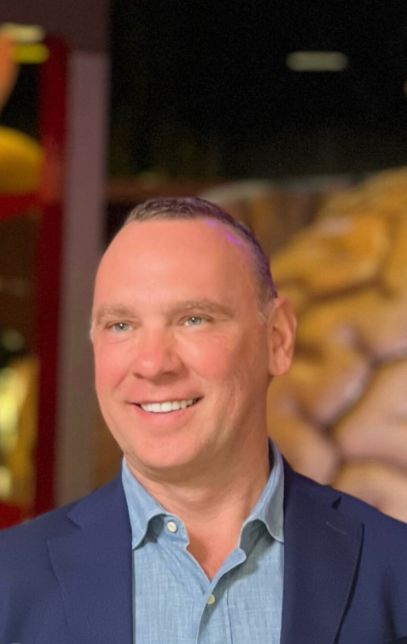In the United States’ fragmented healthcare system, patients often feel like a tiny cog in a giant, impersonal machine. They shuffle from one specialist to the next, repeating their story over and over, while providers work in isolation from each other. Rarely, if ever, does anyone have the complete picture or bother to view the patient as a whole human being.

As Dr. James Flowers, founder of J. Flowers Health Institute explains, “Patients seek care that transcends mere symptom management. They want healthcare providers who invest the requisite time to conduct a more thorough exam, delving into their unique biopsychosocial self, and to facilitate precise and more accurate diagnostics and tailored interventions.”

Medical “silos” have become the norm, where various practitioners function in their own bubbles without collaborating. While specialists focus intently on isolated body parts and diseases, basic prevention often falls by the wayside. Many doctors have less than 15 minutes per appointment, relying overly on pharmacology while they lack time to explore lifestyle changes. Patients want to be heard and understood as whole people – not just clusters of random symptoms.
This assembly line approach may efficiently move patients through, but it overlooks critical information. No two people’s health histories, genetic risks and lifestyles are identical. A customized analysis is vital for accurate diagnostics and effective treatment. As Dr. Flowers notes, “Patients need guidance to improve outcomes instead of prevention and build resilience over the long-term. Bandaging over problems can allow them to progress. Anything less than a collaborative approach in healthcare is only putting a temporary bandage on a symptom and often results in regression, not progression.”
Fragmentation Endangers Patients
Medical silos have dire consequences, including misdiagnosis, dangerous medication interactions and unnecessary procedures. EHR systems don’t sync properly between providers. Referrals get lost, records go unchecked, and symptoms fall through the cracks. Patients struggle to coordinate their own care. This fragmentation literally endangers their health and lives.
Many suffer from more than one ailment at a time. For example, irresolvable fatigue may result from untreated thyroid disease or clinical depression – or both. Joint pain can signal arthritis, Lyme disease or lupus. Only a thorough workup and complete history can uncover the underlying mechanisms.
Patients want specific solutions, not merely relief of surface symptoms. Bandaging over problems often does not permit them to progress. For instance, mood and pain medications may leave an autoimmune disorder unchecked. Yet an integrated care plan could potentially send the disease into remission.
Toward Integrative, Personalized Medicine
In integrative care, practitioners cooperate as an interdisciplinary team, engaging the patient in shared decision-making. They spend adequate time for a nuanced evaluation. Using advanced testing, they gain a layered understanding of the patient’s genetic, biological, emotional and lifestyle factors. This biopsychosocial model guides prevention and treatment.
Through two-way communication, patients describe their symptoms, priorities and life challenges. In turn, the team explains conditions, offers options and teaches self-care skills. They customize cutting-edge interventions to align with the patient’s circumstances and abilities. Monitoring progress together, they adjust treatments accordingly.
This collaborative dynamic honors patients as partners vested in their own wellbeing. It ensures they understand and adhere to health plans. Research shows integrative care produces better outcomes, lower costs and greater patient satisfaction compared to fragmented models.
The Ideal: “A Medical Home”
Ideally each person would have an integrative “medical home” – a single, trusted point of access to coordinate whole-person care. The primary physician refers out to fully integrated specialists as needed, managing pharmaceuticals to avoid interactions. They help patients navigate tests, scans, disability paperwork and more.
This streamlined approach prevents confusion and complications. It institutes proper screenings while reducing unnecessary treatments. The medical home oversees lifestyle improvements in nutrition, exercise, stress reduction and sleep. Most crucially, all providers communicate fluently through a universal EHR system. This level of care coordination is proven to enhance therapy effectiveness while lowering utilization costs.
At the vanguard, J. Flowers Health Institute’s 360-Degree Living MRI program provides next-level, team-based medicine. Their full person approach treats patients as valued individuals, not just names in a time slot. Comprehensive testing and consultations build a multidimensional profile with practical applications. This integrative method is the gold standard model that can dissolve medical silos.
As Dr. Flowers explains, “We spend adequate time for a nuanced evaluation using advanced testing to gain a layered understanding of the patient’s complete picture – genetic, biological, emotional and lifestyle factors. This biopsychosocial model guides customized prevention and treatment.”
Barriers to Change
This vision faces huge obstacles, since medical culture resists shifting from old siloed habits. Provider networks bicker over business interests. Solo practitioners feel threatened by integrated models. But forward-thinkers are bands together in pockets of innovation.
The major reforms needed require legislative action and public initiative. Healthcare authorities must challenge status quo operations. For instance, reimbursement structures could incentivize collaboration by paying out for positive patient outcomes rather than sheer quantity of services.
Despite systemic barriers, promising changes in integrative care are emerging at pioneering institutes. Some establish fully collaborative clinics, while others coordinate virtual integration between providers. This level of care integration produces optimal health outcomes. Though a profound transformation, it holds potential to dissolve the inefficiencies and dangers imposed by medical silos.





